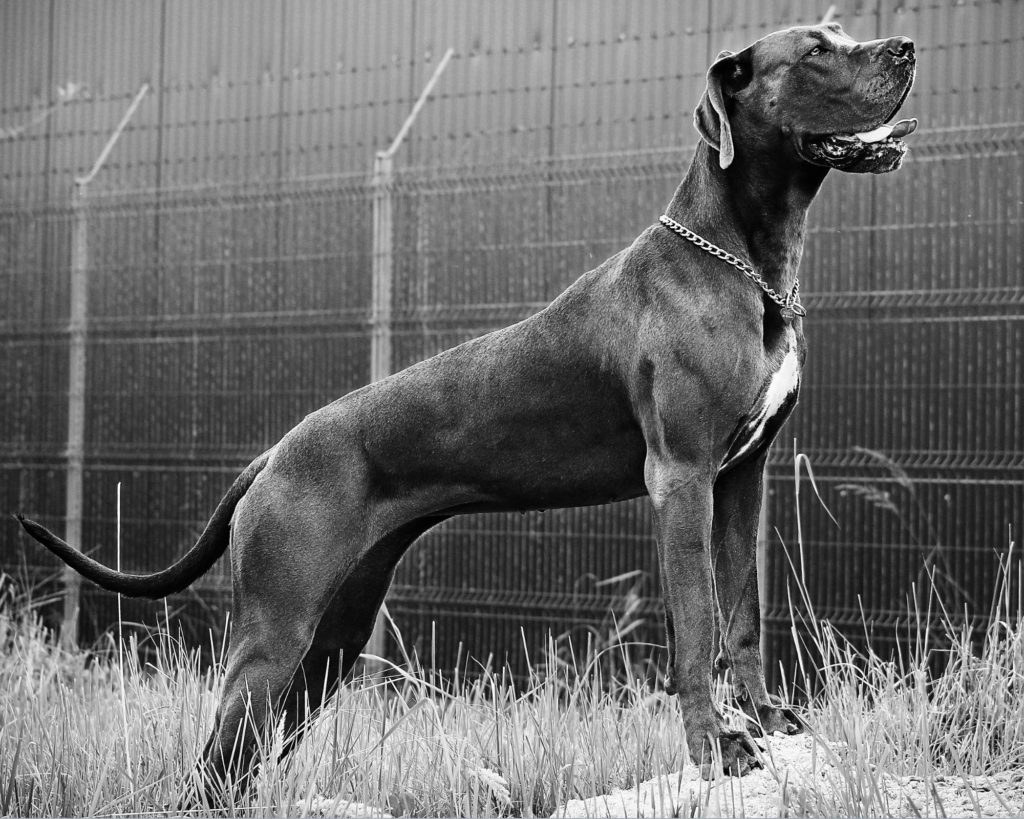Does your Great Dane look so skinny that you are concerned he’s not eating enough? Were you expecting a giant, robust, beefy dog and ended up with a walking skeleton instead? A lot of people are concerned about their Great Danes’ weight and we’re here to clear up any myths and misconceptions.
There are so many reasons for a Great Dane to appear skinny, and I’m going to cover them all. To get you started, here is a short list. I will go into more depth on this below:
Reasons that your Great Dane may look underweight:
- Genetics
- Age
- Nutrition
- Lack of exercise
- Early spay or neuter
- Medical problems
Chances are your Great Dane is not actually too thin!
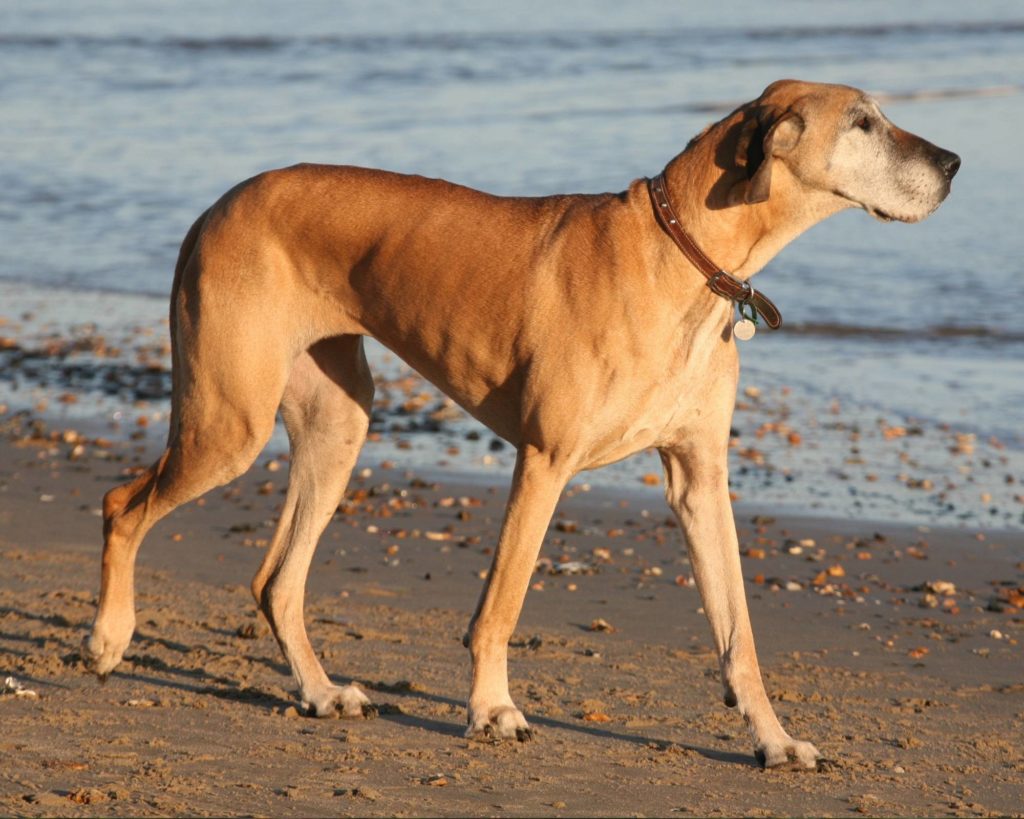
Skinny Great Danes & Genetics
Like humans, Great Danes can come in different body shapes.
For information on the Great Dane breed standard, read HERE.
It’s entirely possible that your Great Dane appears skinny to you because you were expecting a more stocky, mastiff-like dog, and that’s not the genetics your dog has.
The Great Dane written standard in both the U.S. and Europe say that Danes should be balanced, powerful, muscular, and smooth. They should never be stocky or heavy.
Read more about EURO Danes HERE.
Some Great Danes are built like tanks, with a short stocky build.
Other Great Danes are built more like greyhounds, and have a lean wirey build.
Here is an illustration of the correct Great Dane body type. These dogs below are not stocky, nor are they greyhound like.
If your Great Dane seems thin and lacks substance, it could just be genetics at play. Those genetics may also result in slow maturity; some Danes take years to reach their full potential, and patience is key.
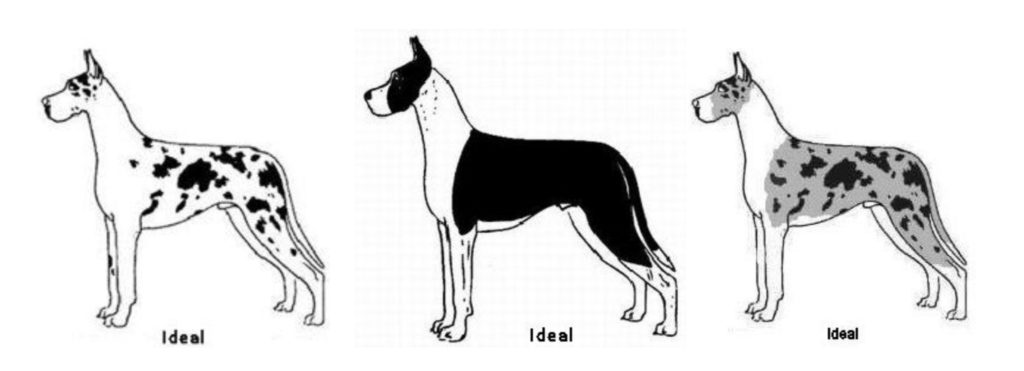
Age and Weight in Great Danes
Some Great Danes appear skinny because of their age.
Puppies, especially intact males under the age of 2, are notoriously lean and lanky (read more about this in the nutrition section). Seeing a few ribs is normal and healthy.
Older adult dogs may also begin to appear thin, as they lose muscle mass with age.
One of the most common concerns we see from Great Dane owners is that their growing puppy looks too skinny.
One of the worst things you can do in this case is to start adding fatty foods, toppers, and supplements. Do not “give your dog more groceries” in order to bulk them up or fill them out. This dangerous practice can lead to pancreatitis or obesity; neither are things that you want.
For puppies, make sure you are feeding a correct diet and getting your pup moving freely on soft, varied terrain as much as possible so they can build muscle and tendon strength. For older dogs, the same thing applies.
As always, talk to your veterinarian if you are worried that your dog is too thin. 99% of the time, you’ll learn that your dog is actually just fine!
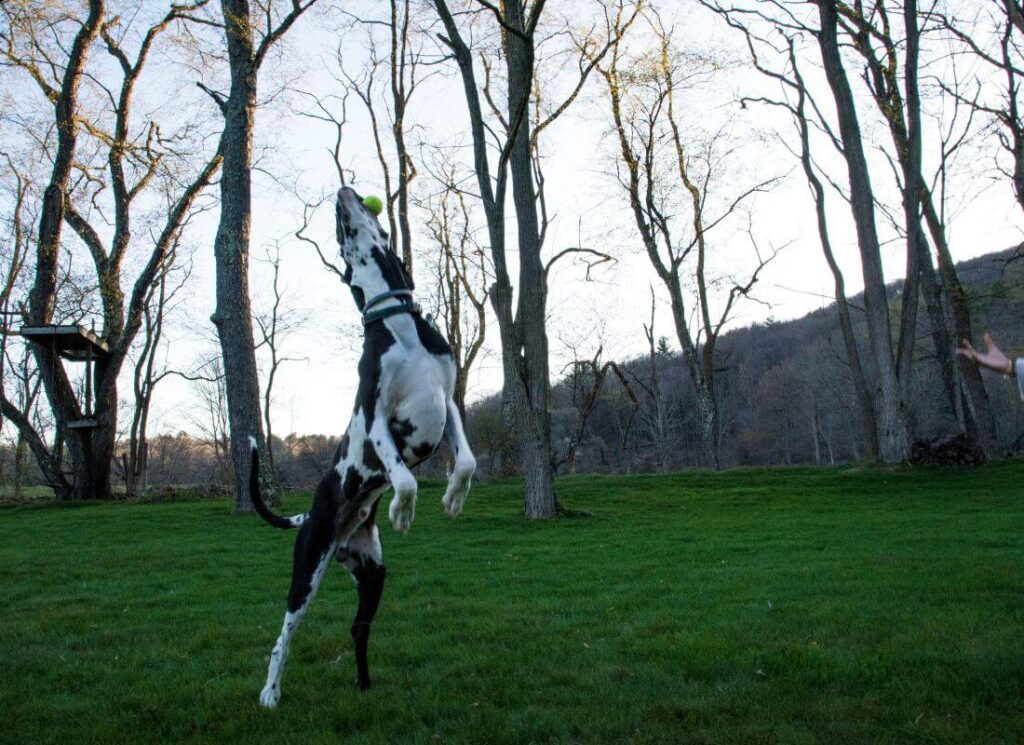
Nutrition for Great Danes
Another reason you may find that your Great Dane is too skinny has to to with nutrition!
Some formulas simply do not have the correct recipe that will allow your Great Dane to thrive. The information I’m about to share may surprise you!
Great Dane puppies will be starved of certain nutrients if they are fed adult formulas that were not created to support large & giant breed Growth.
It is not uncommon for us to see 6-12 month old Great Dane puppies, who were fed adult foods, that are incredibly lanky and unstable looking.
These dogs will benefit from a properly formulated puppy food that will have the correct protein, fat, and carb ratio to promote muscle development, skin, heart, brain, eye, and bone health.
It’s 2023, Here is Why Great Danes Should Have Puppy Food
For adult dogs (24 months +) who seem to be struggling with muscle development, energy levels, skin and coat health, or structural stability, talk to your veterinarian.
We recommend sticking to dog food brands that have board-certified veterinary nutritionists on staff, and that do a lot of peer-reviewed nutritional research.
Here is our list of top-tier foods for Great Danes. Feed the puppy formulas until 18-24 months.
- Purina Pro Plan Large Breed Puppy – any flavor!
- Purina Pro Plan Sensitive Skin & Stomach Large Breed puppy – TOP PICK, salmon-based
- Eukanuba Large Breed Puppy (Great for active and sporting dogs)
- Purina One Large Breed Puppy (Excellent budget option)
- Hill’s Science Diet Puppy Large Breed
- Royal Canin Giant Puppy Dry Dog food (to age 12 months) – TOP PICK, PREMIUM OPTION
- Royal Canin Giant Junior Dry Dog food (8-24 months)
- Purina Large Breed Puppy Chow
Check out THE GIANT DOG FOOD PROJECT to compare brands and values.
- Purina Pro Plan Sensitive Skin and Stomach Large Breed (Salmon based, chicken free)
- Purina Pro Plan Large Breed Shredded Chicken & Rice (Large Pieces & Chicken Shreds!)
- Purina Pro Plan Large Breed Weight Management (Get the weight off)
- Purina Pro Plan Large Breed Bright Mind Age 7+ (for Senior Great Danes)
- Purina Pro Plan Giant Breed (Hard to find, might be discontinued)
- Royal Canin Giant Breed (Amazing for dogs with chronic loose stools, TOP TIER)
- Eukanuba Large Breed (Great for active and sport dogs)
- Purina One Smart Blend Large Breed (Fantastic budget-friendly option)
- Hill’s Science Diet Large Breed Beef & Rice
- Purina Pro Plan 30/20 Sport Beef & Bison
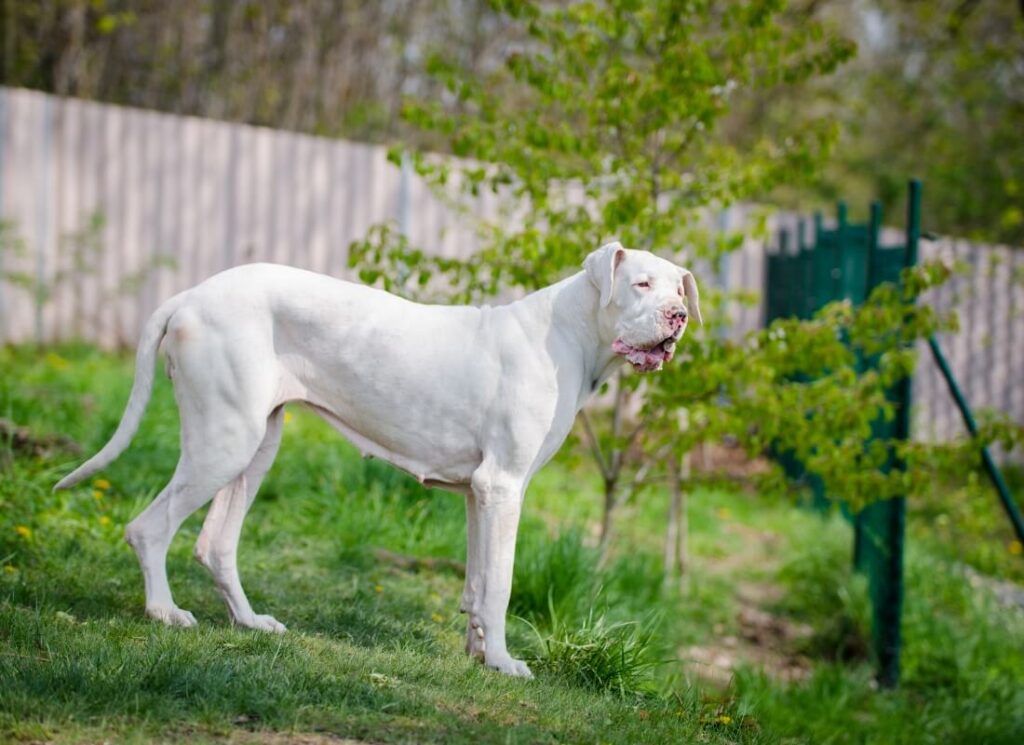
Lack of Exercise & Great Danes Weight
Great Danes were originally bred to hunt wild boar.
They are meant to be a lean, graceful, athletic, and muscular breed.
In other words, it’s not natural for Great Danes to get all or even most of their exercise from obedient leashed walks on pavement.
Of course, all Great Danes should know how to walk politely on a leash.
However, the most natural thing for a Great Dane is to be able to freely move on soft, varied terrain as often as possible. Off-leash activities such as exploring fields and trails are ideal for physical and mental health.
Many Great Danes who appear thin and unstable simply lack muscle.
If you are not able to get your dog moving safely (and legally) off-leash, we recommend a long biothane line clipped to an escape-proof martingale collar, and spending time together in an empty field!
Teach a Great Dane to Recall with an E-Collar
Off-Leash Training Guide for Great Danes
You can also look into swimming. Many canine therapy and training, boarding, or sporting facilities have pools for dog swimming that can be rented by private users.
Contrary to popular belief, Great Danes are not lazy dogs. They have an excellent off-switch and love the couch at home, but they should be robust and athletic otherwise.
If your Dane is excessively lazy or docile, talk to your vet. They may be in pain, have a medical issue (see below), are depressed, are overweight, need better nutrition, require a nail trim, or have unstable structure that makes it difficult or even painful to move normally.
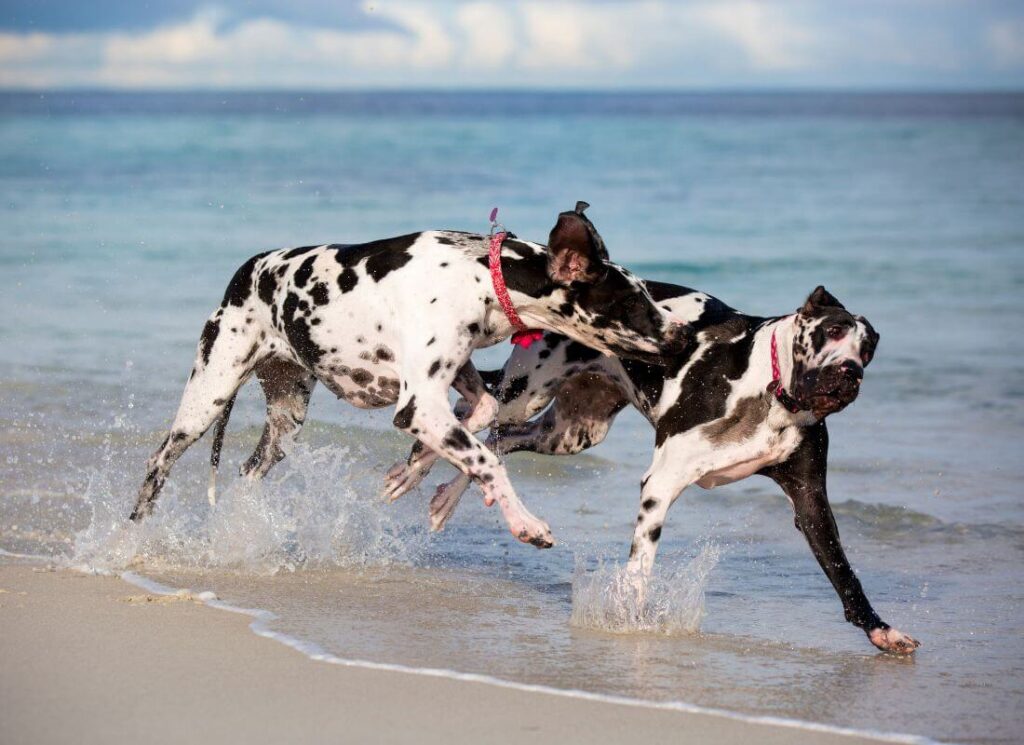
Early Spay & Neuter in Great Danes
This is a big one. Many people are understandably confused about when to spay or neuter their Great Dane.
Research on this topic is ongoing, and many veterinarians now believe that delayed spay and neuter is beneficial for joint development and stability.
We believe that most Great Danes should remain intact until at least 18, if not 24 months.
For starters, it’s not ideal to perform a gastropexy prior to 18 months of age (after the time when the dog is less likely to experience any more explosive growth spurts), and you generally want to perform the spay/neuter and gastropexy in the same surgery. So waiting has its benefits here, too.
Second, studies have shown that large and giant breed dogs skeletal development could benefit from being kept intact through maturity. The benefits may include:
- Lower risk of ACL / CCL tears and ruptures
- Lower risk of developing hip dysplasia
- Lower risk of developing certain cancers, including osteosarcoma
- More stable structure overall
If your Great Dane appears to lack bone, muscle, and substance, and seems unusually thin, lanky, and even a little too tall, early spay/neuter may have been a contributing factor.
Of course, owning an intact giant-breed dog is a huge responsibility. Training, socialization, and management are key.
If you cannot keep your Great Dane under control and on your property at all times, spay/neuter is recommended to prevent unwanted pregnancies.
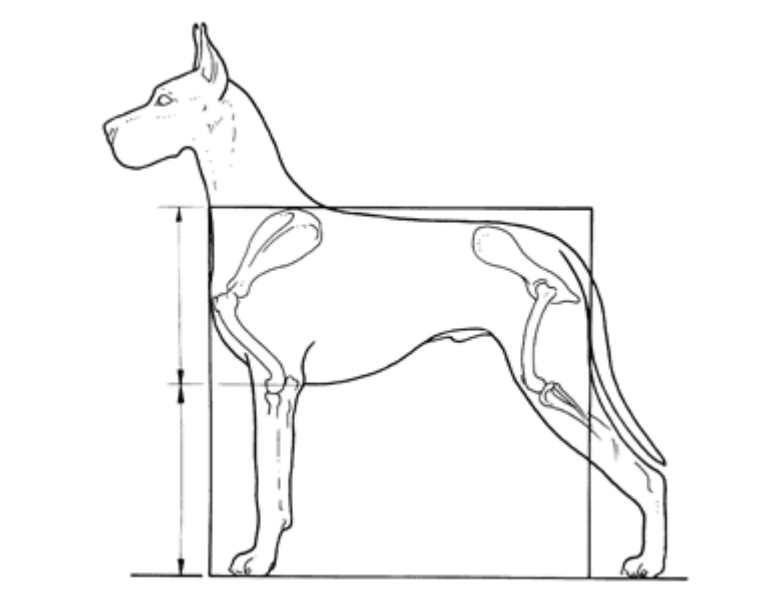
Great Dane too Skinny and Medical Problems
Of course, all of the above reasons for your Great Dane looking too skinny mean nothing if the root cause is a medical problem.
Here are some common medical reasons why your Great Dane may be struggling to gain or maintain weight.
Talk to your veterinarian if you are worried about the health, weight, or wellness of your Great Dane.
Common reasons for weight loss and skinniness in dogs:
- Parasites, including roundworms, heart worms, and tapeworms
- Obstructions (medical emergency)
- Megaesophagus
- Unbalanced nutrition
- Heart Disease or DCM, whether caused by genetics or nutrition
- Pain
- Cancer
- Diabetes
- Thyroid Disorders
- Hypocalcemia
- Kidney disease
Of course, that list is not exhaustive. A veterinary checkup can address issues and get you on the path towards health with your Great Dane!

